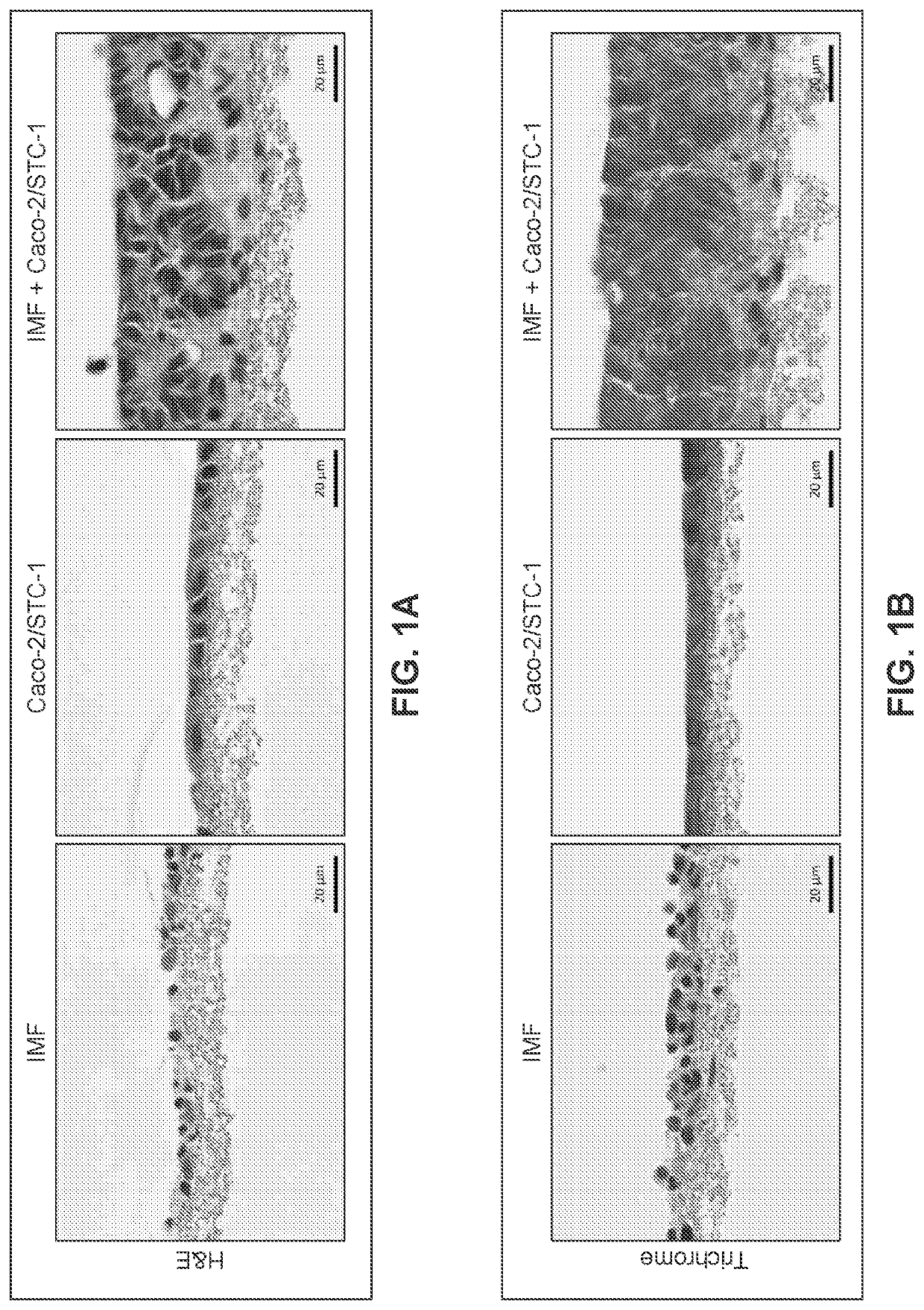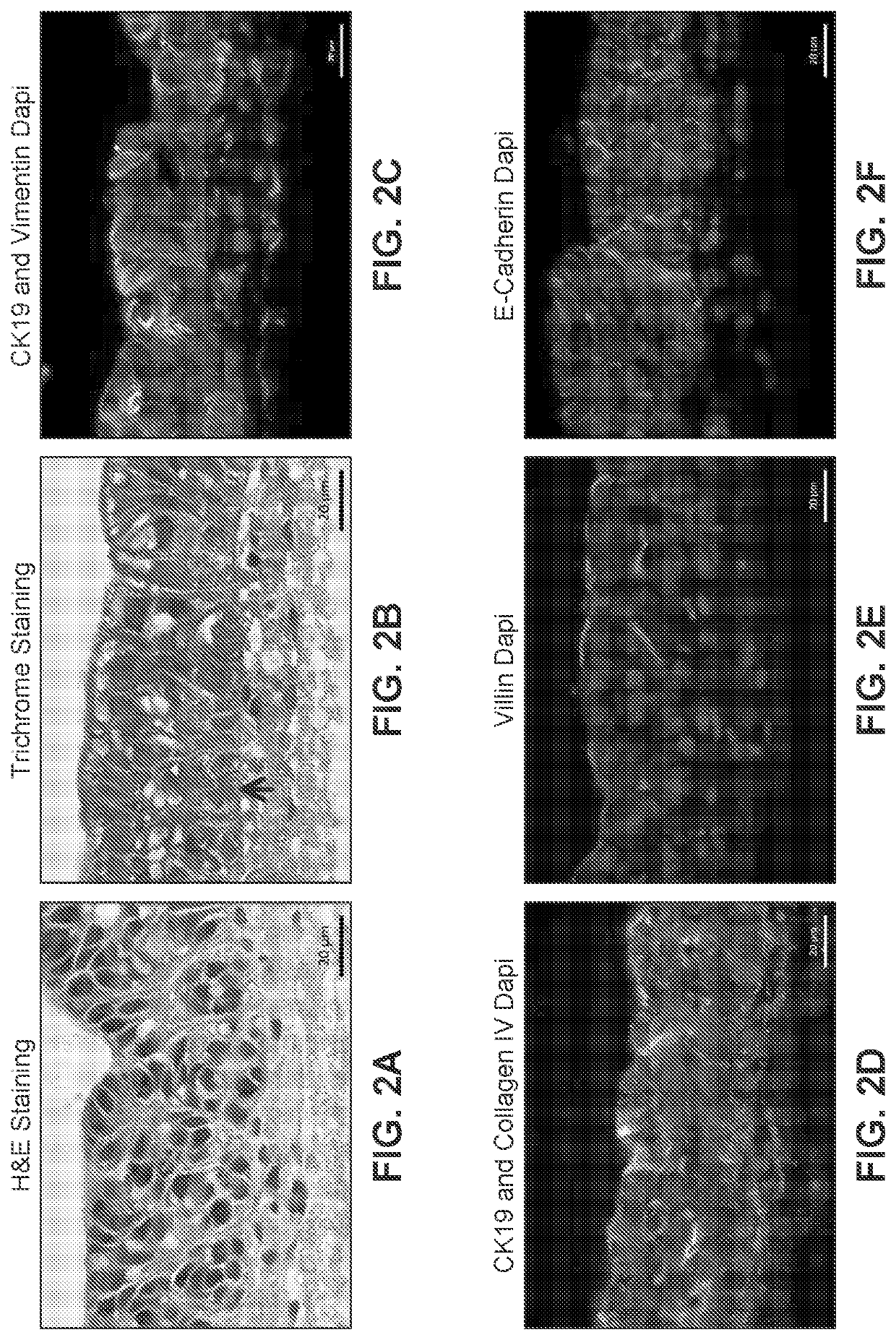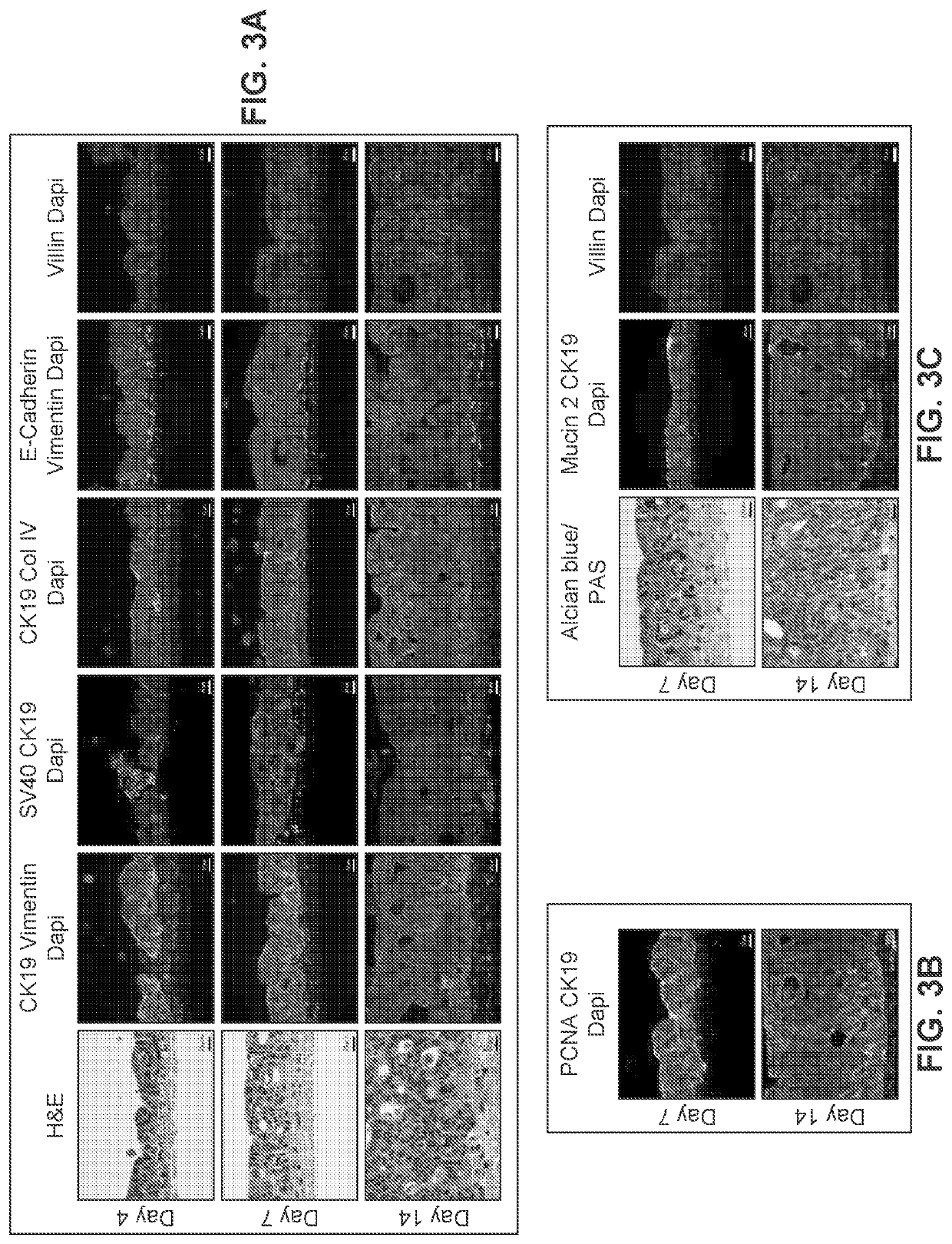Engineered Intestinal Tissue and Uses Thereof
- Summary
- Abstract
- Description
- Claims
- Application Information
AI Technical Summary
Benefits of technology
Problems solved by technology
Method used
Image
Examples
example 1
A Manually Created Three-Dimensional Intestinal Tissue Model
[0288]Human intestinal tissue was fabricated with human primary intestinal cells and intestinal cell lines by continuous deposition using interstitial bio-ink containing gelatin and manual deposition of an epithelial suspension.
[0289]Bio-ink was generated by a cellular mixture of 100% primary adult human intestinal myofibroblasts (IMF) in 8% gelatin in a concentration of 20 million cells per milliliter. Three-dimensional bioink constructs were printed by continuous deposition using the Novogen MMX Bioprinter®. One tissue was printed per transwell in a 24 well plate. The transwell printing surface contained a polytetrafluoroethylene (PTFE) membrane coated with equimolar mixture of types I and III collagen (bovine) with pores 3 μm in size. Following printing, tissues were allowed to mature for 4 days in a humidified incubator in growth media. Tissues were cultured in 100% IMF media and media was changed daily. After incubatio...
example 2
A Bioprinted Three-Dimensional Intestinal Tissue Model
[0297]A human intestinal tissue construct was fabricated by bioprinting with 100% human adult primary intestinal cells by continuous deposition using interstitial bio-ink containing collagen followed by deposition of epithelial suspension.
[0298]Bio-ink was generated by a cellular mixture of 100% primary adult human intestinal myofibroblasts (IMF) in 100% bovine type I collagen at a concentration of 20 million cells per milliliter. Three-dimensional bio-ink constructs were printed by continuous deposition using the Novogen MMX Bioprinter® in a base layer to create an interstitial structure. One tissue was printed per transwell in a 24 well plate. The transwell printing surface contained a polytetrafluoroethylene (PTFE) membrane coated with equimolar mixture of types I and III collagen (bovine) with pores 3 μm in size. Following printing, tissues were allowed to mature for 4 days in a humidified 37° C. incubator in 100% IMF media a...
example 3
A Bioprinted Three-Dimensional Intestinal Tissue Model Comprising Enteroendocrine Cells
[0307]A human intestinal tissue construct was fabricated with human adult primary intestinal cells and mouse enteroendocrine cell line STC-1 by continuous deposition using an interstitial bio-ink containing collagen and manual deposition of an epithelial suspension.
[0308]The interstitial layer was generated in an identical manner to Example 2. Bio-ink was generated by a cellular mixture of 100% primary adult human intestinal myofibroblasts (IMF) in bovine type I collagen at a concentration of 20 million cells per milliliter. Three-dimensional bioink constructs were printed by continuous deposition using the Novogen MMX Bioprinter® in a base layer with to create an interstitial structure. One tissue was printed per transwell in a 24 well plate. The transwell printing surface contained a polytetrafluoroethylene (PTFE) membrane coated with equimolar mixture of types I and III collagen (bovine) with p...
PUM
 Login to View More
Login to View More Abstract
Description
Claims
Application Information
 Login to View More
Login to View More - R&D
- Intellectual Property
- Life Sciences
- Materials
- Tech Scout
- Unparalleled Data Quality
- Higher Quality Content
- 60% Fewer Hallucinations
Browse by: Latest US Patents, China's latest patents, Technical Efficacy Thesaurus, Application Domain, Technology Topic, Popular Technical Reports.
© 2025 PatSnap. All rights reserved.Legal|Privacy policy|Modern Slavery Act Transparency Statement|Sitemap|About US| Contact US: help@patsnap.com



